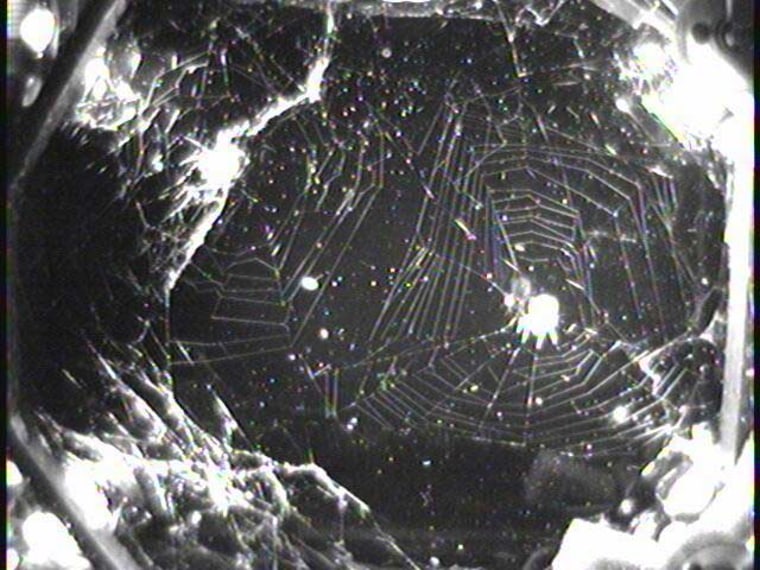An intrepid spider may have survived the long months at the international space station, with scientists eager to know for sure once it returns to Earth aboard the space shuttle Discovery.
The arachnid, one of two orb weaving spiders sent to the station last November, is due to land with Discovery's astronaut crew in Florida on Saturday afternoon. The spiders, and some butterfly larvae, are part of an educational experiment with students on Earth to compare their development in zero gravity with their counterparts on Earth.
"Everybody is rooting for the spider," NASA's station program scientist Julie Robinson told SPACE.com Thursday.
Space station astronauts named the spiders Elmo and Spiderman and checked in on them from time to time during their months in orbit. The arachnids are the same as the spider "Charlotte" in the children's book "Charlotte's Web" by E.B. White.
"The spider habitat was very hard to see inside because there were quite a bit of fruit fly carcasses, as you might expect from a hungry spider," station commander Michael Fincke radioed Mission Control this week as he packed the spider and butterfly larvae habitats for Discovery's Wednesday departure. "Spiderman and Elmo are on their way home."
As of February, scientists knew that at least one of the spiders was still alive because they saw it in a camera that was watching the two arachnids, Robinson said. But it was hard to see through the webs inside the enclosure to learn the second spider's fate, she added.
The Painted Lady butterfly larvae did not fare as well.
Of the many larvae sent to the station - in a different enclosure than the spiders - only two managed to form a chrysalis but neither emerged as a butterfly, Robinson said. In the months since they launched, the nectar provided as their food had turned moldy, Fincke said.
"That's not necessarily surprising because developmental biology is affected by microgravity," Robinson said. But even on Earth, trying to cultivate butterflies is tricky, so it is difficult to know for sure, she added.
BioServe Space Technologies of the University of Colorado in Boulder is overseeing the spider and butterfly experiment, with scientists planning to open the two habitats for the first time on Sunday. It is one of several efforts to encourage student interest in science, technology and math by through space station science, Robinson said.
Slideshow 12 photos
Month in Space: January 2014
There is also an added bonus, she added.
Another group of scientists is interested in the dead fruit flies used to feed Elmo and Spiderman. Initially launched as spider chow, the flies appeared to have multiplied over time to give the spiders a steady food supply.
Robinson said it turned into an accidental experiment in long-duration, multi-generational fruit fly spaceflight.
"There might be a possibility that there may be a live fruit fly alive in there and they'll be looking for that," she said.
Discovery undocked from the space station on Wednesday and is poised to land Saturday at NASA's Kennedy Space Center in Cape Canaveral, Fla., to end a 13-day mission. While the spiders spun their webs inside the station, the astronauts performed three spacewalks to add the last pair of U.S. solar arrays to the station, boosting it to full power.
They also swapped out one crewmember, NASA astronaut Sandra Magnus, who arrived at the station last November with the spiders. It was students from Magnus's hometown of Belleville, Ill., who suggested the names Elmo and Spiderman.
As for the spiders themselves, scientists are hopeful but only time will tell.
"A spider can live a long time," Robinson said, adding that arachnids can also slow their metabolism to survive. "They can hang in there."

